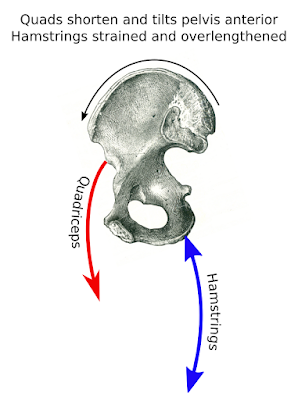High Hamstring Strain and High Hamstring Tendinopathy
 |
| Fig 1: Common mechanism of hamstring injury |
The hamstrings
frequently become injured in their eccentric phase of contraction.
What this means is that in activities such as kicking a soccer ball or football, or in the leg swing during running, the hamstrings are lengthening
(and the quadriceps are contracting and shortening). Although the
hamstrings are lengthening, they fire to slow down or decelerate the
motion (Fig.1).
Understanding this
mechanism of injury is crucial for Sports Medicine Acupuncturists®
such as myself, as this informs clinical inquiry. Are the quadriceps
and other hip flexors short and overactive placing the hamstrings in
a chronically taut and lengthened position (Fig. 2)? This would need to be
addressed to allow adequate healing. Or, are the hamstrings
chronically in a shortened position? Both of these situations could
be an underlying cause of hamstring strain recurrence and in both
situations the patient would complain of 'tight' hamstrings. In the
first instance these 'tight' hamstrings are pulled taut like a rubber
band overstretched (a very common occurrence), while in the second
they are in a short and tight positions. However, treatment strategies for these two instances would be very different.
 |
| Fig. 3: Modified from Netter's Atlas of Human Anatomy |
Besides these
sources of pain, referred pain is also a possibility and needs to be
considered. Referred pain may come from the lumbar spine, from the
sacroiliac joint, or from trigger points in the gluteal muscles, the
low back, or even the lower portion of the hamstrings. The clinician
must be thorough during evaluation and patients should make sure that
their practitioner, whether an MD, acupuncture physician,
physical therapist, or massage therapist, has the understanding and
training to properly assess and evaluate the condition. Proper
assessment of all the factors leads to proper treatment. Proper
treatment leads to faster and more profound healing.







No comments:
Post a Comment